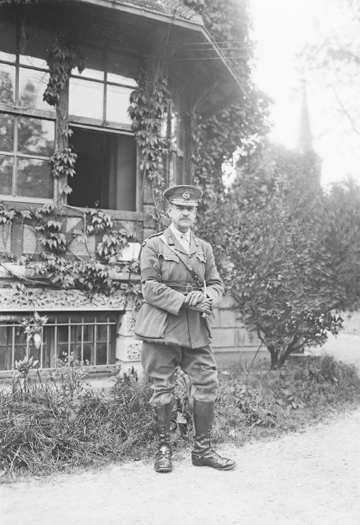
John Monash was promoted to lieutenant general on 1 June 1918 and given command of the newly formed Australian Corps, comprising all five Australian divisions. This photo was taken before his promotion, when he was General Commanding Officer of the 3rd Division, at his headquarters at Bertangles Château. AWM E02350
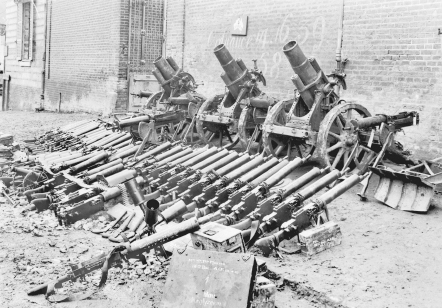
Camon, near Amiens, 5 May 1918. German arms and equipment captured by the Australian 15th Brigade at Villers-Bretonneux. The Australians’ recapture of the town on 25 April was broadly celebrated and reaffirmed the effectiveness of Australian troops. AWM E04818
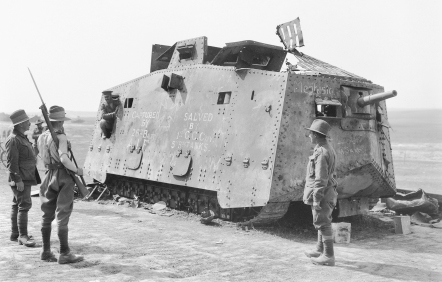
Australian soldiers inspect a German tank captured by the 26th Battalion at Monument Wood, near Villers-Bretonneux. After being bogged and abandoned on the battlefield, it was recovered in July 1918. AWM E02877
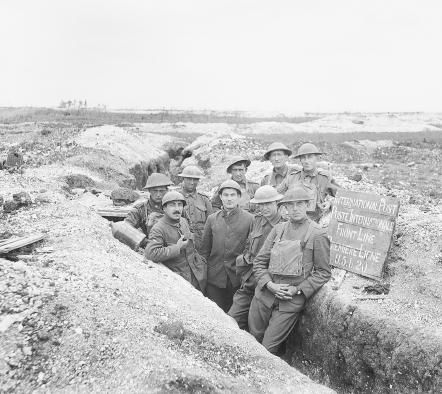
A group of French, American and Australian soldiers gathered in a trench at the International Post. The post was established at the junction of the French and Australian lines in the trenches near Monument Wood. The sign on the right reads ‘International Post, Front Line’ in English and French. AWM E04910
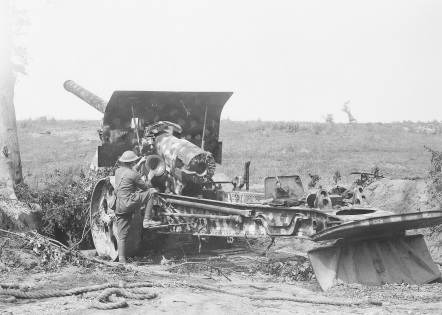
A high-velocity gun captured by the Australians near Morcourt during the offensive of 8 August. AWM E02888
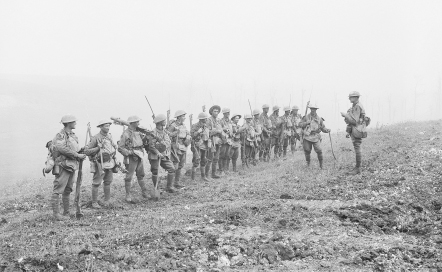
Lieutenant Rupert Frederick Arding Downes, MC, addressing his platoon from ‘B’ Company, 29th Battalion, during a rest near the villages of Warfusée and Lamotte before the advance into Harbonnières, the battalion’s second objective of 8 August. The sergeant on the left of the line, William O’Brien, was killed the following day. AWM E02790
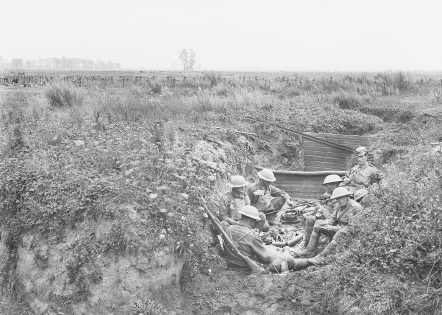
Unidentified men of the 8th Brigade established in the final objective of 8 August. The men are occupying old French trenches. AWM E02789
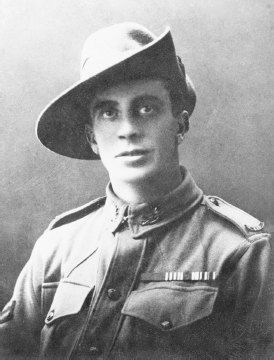
Studio portrait of Lance Corporal Bernard Sidney Gordon, MM, VC, of the 41st Battalion. Gordon was awarded the Military Medal for action on 8 August at Hamel, and the Victoria Cross for further bravery during advances towards Fargny Wood. On the night of 26–27 August, Gordon led his section through heavy shellfire and single-handedly attacked an enemy machine-gun post, then cleared up a number of trenches. AWM A05210
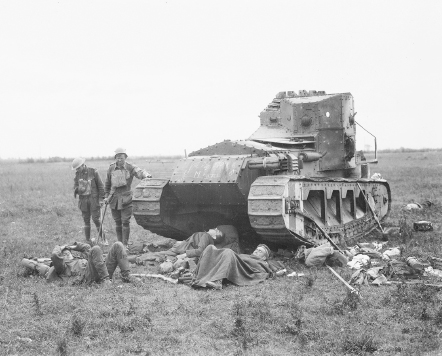
Wounded Australians of the 15th Brigade standing over wounded German prisoners beside a British Whippet tank near Harbonnières on 9 August. AWM E02880
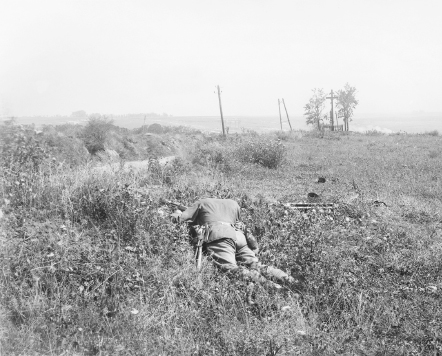
A German sniper killed in the Allied advance towards Bray, where the 9th Brigade experienced heavy fighting on 22 August. He had in his pocket a letter to his wife, telling her he was facing the Australians and wanted to get out of the area as quickly as possible. AWM E03061
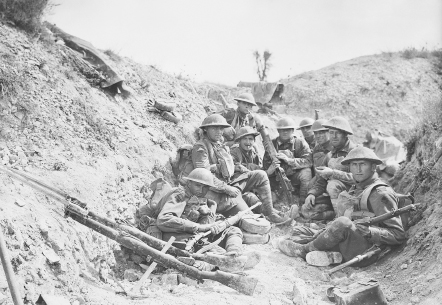
Members of the 24th Battalion in a trench about 1.20 pm on 1 September, awaiting the lifting of the artillery barrage before the renewed attack that led to the capture of Mont St Quentin. AWM E03138
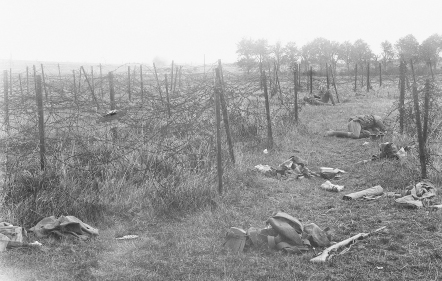
The gap in the tangled barbed wire at Anvil Wood through which some of the 53rd Battalion advanced on 1 September, facing heavy machine-gun fire. The packs of five wounded men can be seen near the bodies of two of the four men killed. AWM E03149
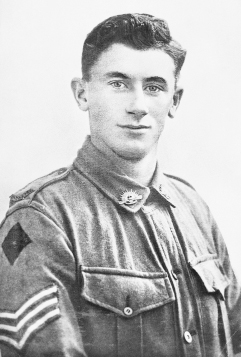
Portrait of Sergeant Albert David Lowerson, VC, 21st Battalion. Sergeant Lowerson was awarded the Victoria Cross for ‘most conspicuous bravery and tactical skill’ on 1 September at Mont St Quentin. AWM P02939.037
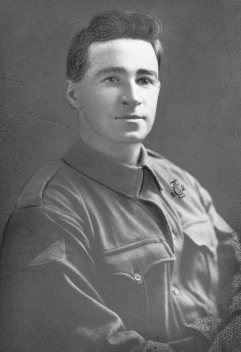
Studio portrait of Corporal Lawrence Carthage Weathers, VC, 43rd Battalion. Weathers received the Victoria Cross for an action on 2 September, undertaken while his battalion was clearing enemy positions north of Péronne. He was mortally wounded in action four weeks later, not knowing of his award. AWM P05212.003
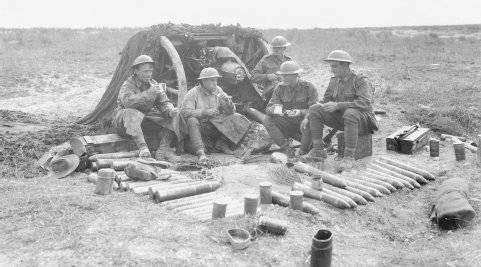
Men of the 4th Australian Field Artillery Brigade having lunch beside their camouflaged gun, established in an open field, on 2 September. AWM E03145
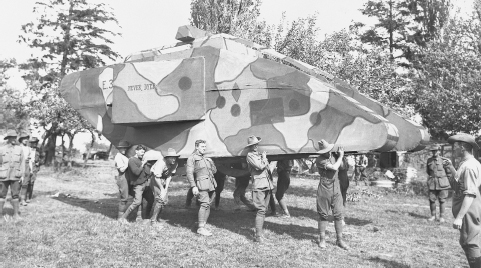
Australian soldiers carrying a dummy tank, weighing about a quarter of a tonne, made to mislead the enemy. These were to be used the following morning, 18 September, in the attack on Le Verguier and the Hindenburg Outpost Line. AWM E04934
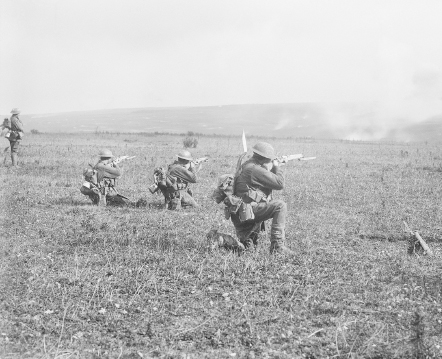
Troops of the 45th Battalion at their newly captured objective between Bellenglise and Le Verguier, in front of the Hindenburg Outpost Line, on 18 September. They are seen sniping the enemy retreating up the opposite hillside. AWM E03260
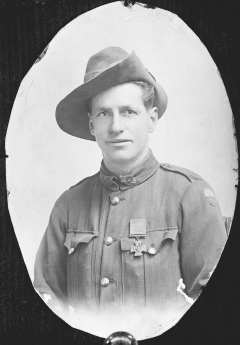
Studio portrait of Private James Woods, VC, of the 48th Battalion. He was awarded his Victoria Cross at Le Verguier on 18 September after capturing a heavily defended German post and holding it against counterattacks. AWM A02640
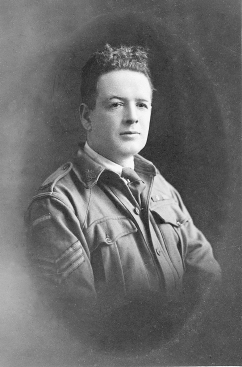
Portrait of Sergeant Maurice Vincent Buckley, VC, 13th Battalion. Buckley was also awarded the Victoria Cross for his actions at Le Verguier, where he rushed at least six machine-gun positions, captured a field gun and took nearly 100 prisoners. AWM A05136
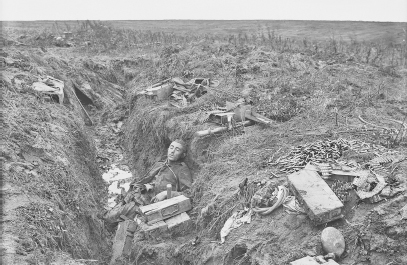
A German machine gunner lying dead at his post in a trench near Hargicourt on 19 September. He had fought to the last against the advancing Australian troops, as can be seen by the spent machine-gun cases. AWM E03351
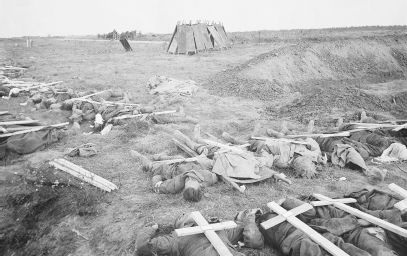
Bodies of American troops laid out for burial. They were killed in the fighting near Guillemont Farm on 29 September, when the American 27th Division attacked towards the main Hindenburg Line and suffered many casualties. AWM E04942B
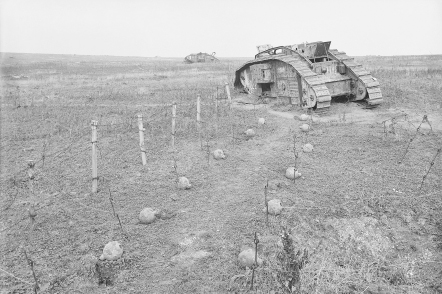
View showing the distribution of landmines in the wire near Ronssoy, which rendered useless many of the tanks assisting in the attack on the Hindenburg Line. These ‘plum pudding’ bombs formed part of a former British minefield. AWM E04939
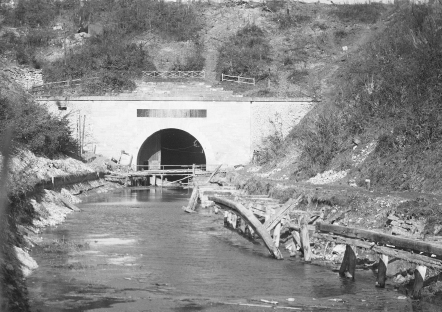
The entrance to the St Quentin Canal tunnel near Bellicourt. This photograph was taken on 26 October 1918. AWM E03655